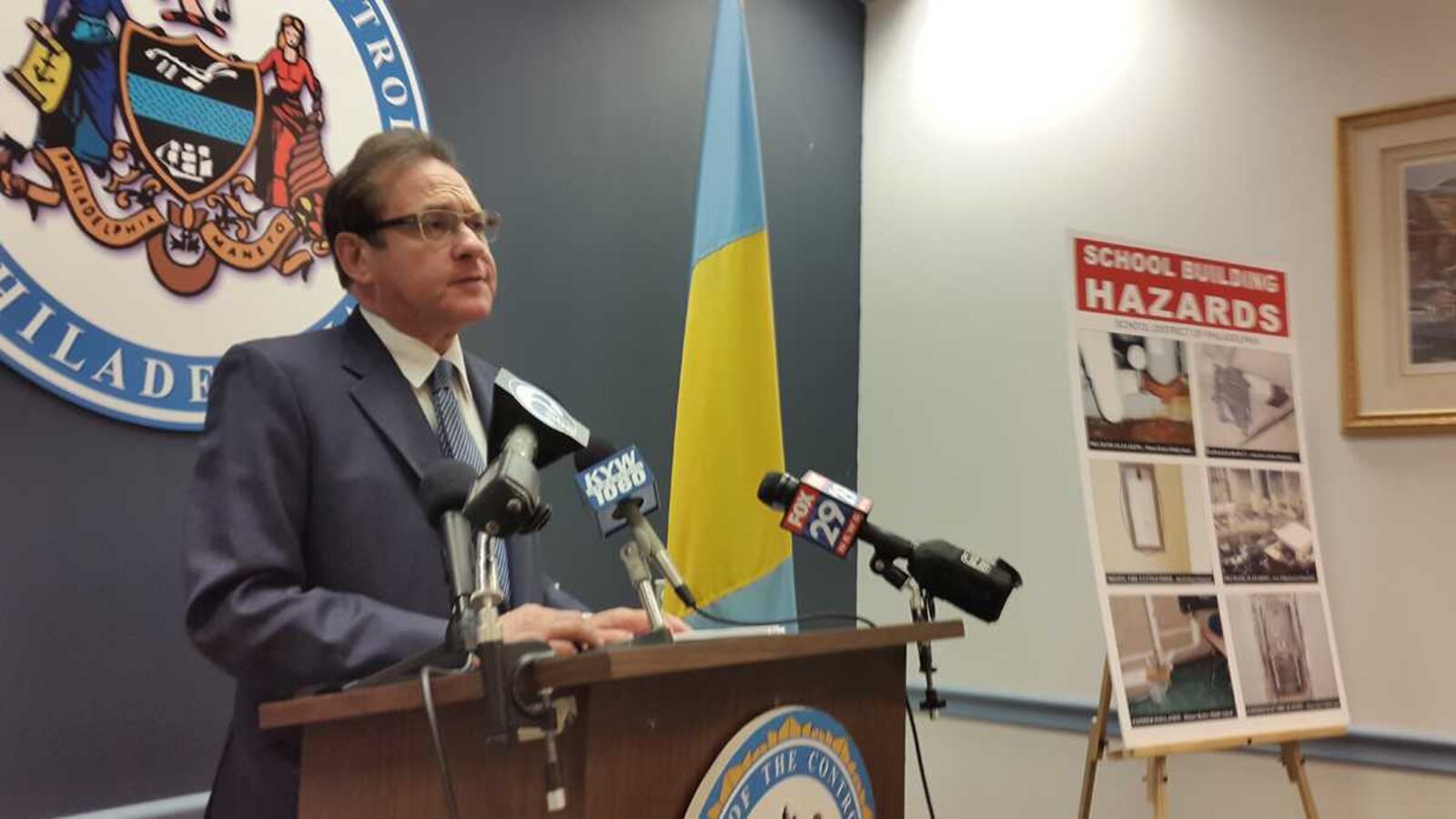This article was originally published in The Notebook. In August 2020, The Notebook became Chalkbeat Philadelphia.
Periodically, city officials shine a spotlight on the condition of school buildings in the School District of Philadelphia. Not for the first time, what they saw isn’t pretty.
City Controller Alan Butkovitz’s office visited 20 schools between October and March. The inspectors’ findings, detailed in a report that came out Wednesday, included electrical hazards, water damage, and permanently clogged toilets.
According to the report, some problems showed up in a lot of the schools:
70 percent had electrical hazards, such as exposed wiring.
95 percent had water damage, which includes mold.
75 percent had fire hazards, such as missing or out-of-date fire extinguishers.
In some cases, Butkovitz’s staff tried to intervene on the spot for issues they deemed too hazardous, the report said. One of these was exposed wiring carrying a 600-volt charge in an unlocked closet at Dimner Beeber Middle School. Another was unsealed asbestos in a hallway at Francis Scott Key Elementary School. Butkovitz said he received no response to an urgent message he sent to the District regarding the asbestos.
"You’ve got kids in Philadelphia neighborhoods and they can’t even go to the bathroom because of what they’re going to see. … They’ve got to be worried that if they touch something on the wall it’s going to electrocute them," said Butkovitz, who compared bathroom conditions to those in India and other developing countries.
In 2008, the Controller’s Office issued a similar report, looking at 19 schools. This time, it looked at 10 of those same schools, plus 10 others deemed to be representative of the types and locations of school buildings around the city.
According to the report, many of the schools previously inspected had fixed some of their earlier problems, but others persisted and new problems were added to the lists. Engineer Marc Orgovan, who conducted some of the inspections, said most of the serious issues were not located in individual classrooms, but in hallways or shared spaces, so it was hard to gauge how many students come into contact with them.
District not surprised by building issues
"Our maintenance budget has declined. There’s no surprises here," said District spokesman Fernando Gallard.
However, he said the inspection adds useful information. "It is a snapshot that the School District of Philadelphia needs more funds to maintain its buildings," said Gallard.


